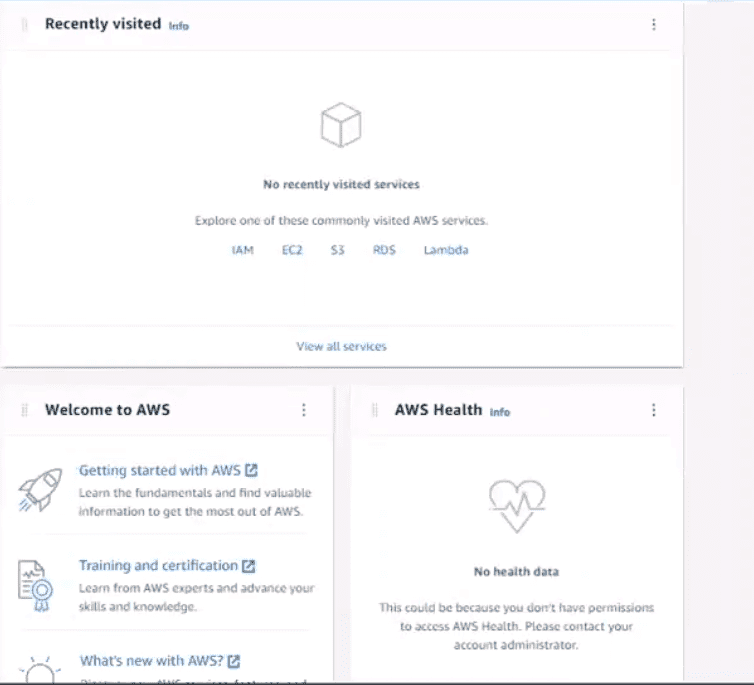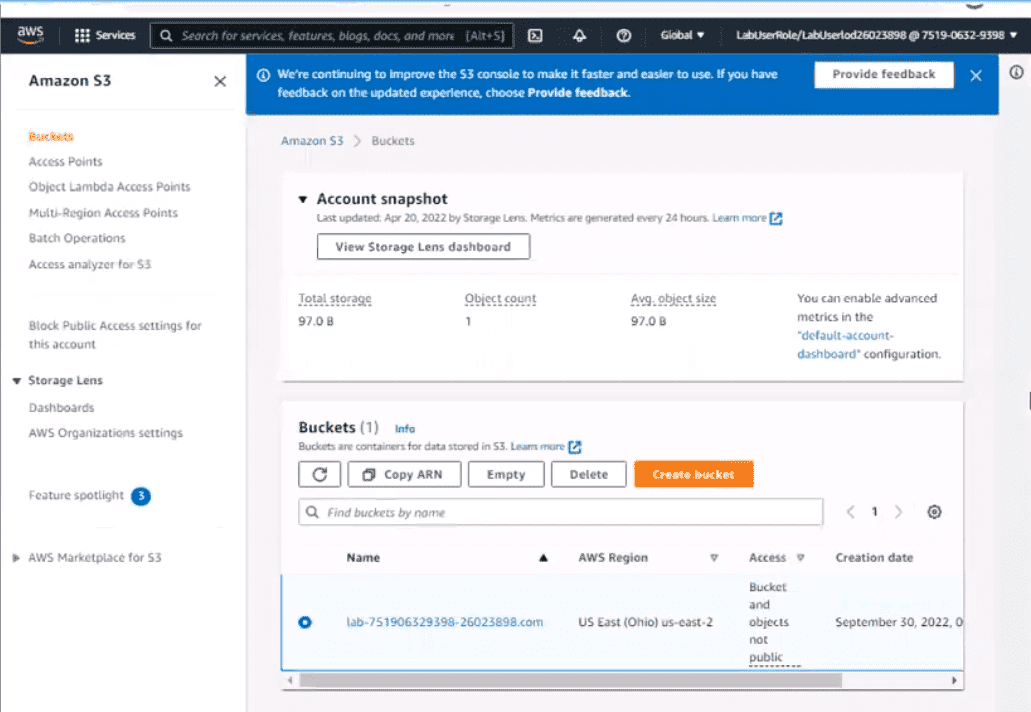Amazon Web Services SOA-C02 - AWS Certified SysOps Administrator - Associate (SOA-C02)
You need to update an existing AWS CloudFormation stack. If needed, a copy to the CloudFormation template is available in an Amazon SB bucket named cloudformation-bucket
1. Use the us-east-2 Region for all resources.
2. Unless specified below, use the default configuration settings.
3. update the Amazon EQ instance named Devinstance by making the following changes to the stack named 1700182:
a) Change the EC2 instance type to us-east-t2.nano.
b) Allow SSH to connect to the EC2 instance from the IP address range
192.168.100.0/30.
c) Replace the instance profile IAM role with IamRoleB.
4. Deploy the changes by updating the stack using the CFServiceR01e role.
5. Edit the stack options to prevent accidental deletion.
6. Using the output from the stack, enter the value of the Prodlnstanceld in the text box below:
If your AWS Management Console browser does not show that you are logged in to an AWS account, close the browser and relaunch the
console by using the AWS Management Console shortcut from the VM desktop.
If the copy-paste functionality is not working in your environment, refer to the instructions file on the VM desktop and use Ctrl+C, Ctrl+V or Command-C , Command-V.
Configure Amazon EventBridge to meet the following requirements.
1. use the us-east-2 Region for all resources,
2. Unless specified below, use the default configuration settings.
3. Use your own resource naming unless a resource
name is specified below.
4. Ensure all Amazon EC2 events in the default event
bus are replayable for the past 90 days.
5. Create a rule named RunFunction to send the exact message every 1 5 minutes to an existing AWS Lambda function named LogEventFunction.
6. Create a rule named SpotWarning to send a notification to a new standard Amazon SNS topic named TopicEvents whenever an Amazon EC2
Spot Instance is interrupted. Do NOT create any topic subscriptions. The notification must match the following structure:
Input Path:
{“instance†: “$.detail.instance-idâ€}
Input template:
“ The EC2 Spot Instance
A webpage is stored in an Amazon S3 bucket behind an Application Load Balancer (ALB). Configure the SS bucket to serve a static error page in the event of a failure at the primary site.
1. Use the us-east-2 Region for all resources.
2. Unless specified below, use the default configuration settings.
3. There is an existing hosted zone named lab-
751906329398-26023898.com that contains an A record with a simple routing policy that routes traffic to an existing ALB.
4. Configure the existing S3 bucket named lab-751906329398-26023898.com as a static hosted website using the object named index.html as the index document
5. For the index-html object, configure the S3 ACL to allow for public read access. Ensure public access to the S3 bucketjs allowed.
6. In Amazon Route 53, change the A record for domain lab-751906329398-26023898.com to a primary record for a failover routing policy. Configure the record so that it evaluates the health of the ALB to determine failover.
7. Create a new secondary failover alias record for the domain lab-751906329398-26023898.com that routes traffic to the existing 53 bucket.
A company is running a serverless application on AWS Lambda The application stores data in an Amazon RDS for MySQL DB instance Usage has steadily increased and recently there have been numerous "too many connections" errors when the Lambda function attempts to connect to the database The company already has configured the database to use the maximum max_connections value that is possible
What should a SysOps administrator do to resolve these errors'?
The SysOps administrator needs to prevent any account within an AWS Organization from leaving the organization.
Options:
A SysOps administrator is managing a Memcached cluster in Amazon ElastiCache. The cluster has been heavily used recently, and the administrator wants to use a larger instance type with more memory.
What should the administrator use to make this change?
A company is running a website on Amazon EC2 instances behind an Application Load Balancer (ALB). The company configured an Amazon CloudFront distribution and set the ALB as the origin. The company created an Amazon Route 53 CNAME record to send all traffic through the CloudFront distribution. As an unintended side effect, mobile users are now being served the desktop version of the website.
Which action should a SysOps administrator take to resolve this issue?
A company is running distributed computing software to manage a fleet of 20 Amazon EC2 instances for calculations. The fleet includes 2 control nodes and 18 task nodes to run the calculations. Control nodes can automatically start the task nodes.
Currently, all the nodes run on demand. The control nodes must be available 24 hours a day, 7 days a week. The task nodes run for 4 hours each day. A SysOps administrator needs to optimize the cost of this solution.
Which combination of actions will meet these requirements? (Choose two.)
The company needs EC2 instances in the VPC to resolve DNS names for on-premises hosts using Direct Connect.
Options:
A SysOps administrator is helping a development team deploy an application to AWS Trie AWS CloudFormat on temp ate includes an Amazon Linux EC2 Instance an Amazon Aurora DB cluster and a hard coded database password that must be rotated every 90 days
What is the MOST secure way to manage the database password?





 Graphical user interface, application, Teams Description automatically generated
Graphical user interface, application, Teams Description automatically generated